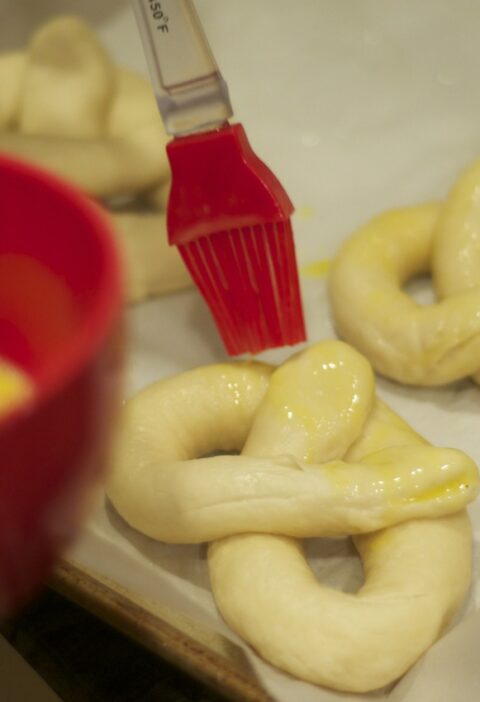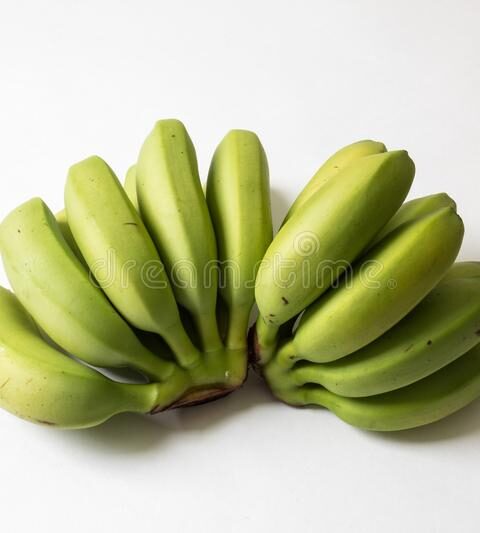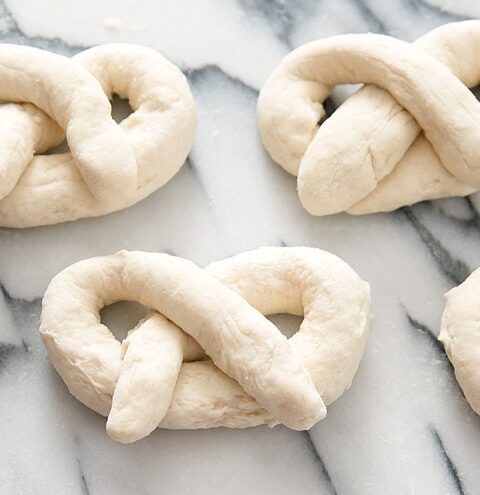In order to convert the original recipe into a vegan sugar cookie recipe, we will be replacing the egg with applesauce, the butter with vegan butter, and the milk with oat milk.
In regard to muffins or breads, ingredient swaps in recipes are generally pretty forgiving. However, for baked goods like cookies, tweaked ingredients can often lead to an entirely new flavor or texture. In our case, we will be replacing the egg and dairy items with vegan alternatives. Eggs, in particular, are especially tricky to substitute whilst maintaining the same resulting characteristics of the original sugar cookie recipe.
- For the milk, there are many vegan, non-dairy milk options. If we used the milk substitute with the largest number of proteins, soy milk, the end result is much denser than intended. This density is better suited for bakes that require structure-building, like breads and cakes, but the structural benefits would serve less of a purpose for cookies. Almond milk might be one of the best alternatives to regular dairy when making cookies. It has a relatively high amount of proteins, which will allow for Maillard browning to occur, but it doesn’t have so many proteins that the cookie is too dense.
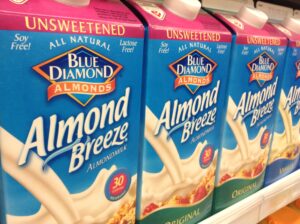
- Butter, the other dairy product in the original recipe, can seem harder to substitute. Besides the flavor added from the fat, butter can also be instrumental in creating the desired texture. The butter in the cookie dough will melt during the baking process and create steam, as water makes up 20% of the composition of butter, which allows for another rising agent. The steam creates air pockets, which contributes to the overall texture of the cookie. If one prefers chewier cookies, they should melt the butter before adding it, as that creates a greater quantity of smaller air pockets. This is because a large portion of the steam will have already been evaporated before the cookies have been placed in the oven. Adding the cold butter into the dough will result in larger pockets of air, due to the entire amount of water in the butter evaporate during the baking process and not before, and a cakier texture. There are many options for vegan butter substitutes, but we are using margarine. This is an extremely popular substitute due to the fact that it so closely resembles butter in texture, flavor, and characteristics. It’s made from an emulsion of vegetable oil, and is therefore a vegan alternative that can serve the same purposes that butter would in the original recipe.
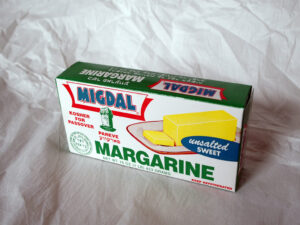
- In replacing the egg, the last critical non-vegan ingredient in the original recipe, one must first determine the job/role the egg has in the original recipe. In pastries that need a lot of air in them, the eggs serve as both a leavening agent and a stabilizer, as the egg whites can be whipped to incorporate air and trap hold the air within the proteins. In this case, most egg replacements would not be suitable, as the substitute would need to be able to replicate both purposes. For cookies, though, the egg ingredients provide moisture and binding in the dough, and so it is much easier to substitute. Aquafaba is suitable to incorporate air and stabilize in recipes, but since we are primarily adding moisture and a stabilizing agent, we are planning to use applesauce as our substitute. Applesauce, and most fruit purées, tends to make the modified recipe slightly denser than the original recipe would have turned out if we had used eggs; to combat this, we add an extra 1/2 teaspoon of baking powder, which allows for more air to form during the baking process and therefore makes the final product less dense. For this substitute, one egg is equal to 1/4 cup of applesauce and 1/4 teaspoon of baking powder.
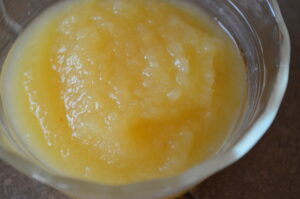
Click this link to return to the recipe at a glance , the chemistry behind the recipe, or the blossom recipe page.
Sources:
Fabry L., Linehan H.; Divine Vegan Desserts. Wakefield Press, 2016. Accessed April 13, 2023.
Steen, C.; Newman, J.M. The Complete Guide to Vegan Food Substitutions; Fair Winds Press,
2010.https://dickinson.idm.oclc.org/login?url=https://search.ebscohost.com/login.aspx?direct=true&db=e700xna&AN=576519&site=ehost-live&scope=site&ebv=EB&ppid=pp_260 (accessed April 13, 2023).
Wong S.; Science of cooking Week 16: Baking without eggs. New Scientist, 2020. Accessed April 13, 2023.
Wo
